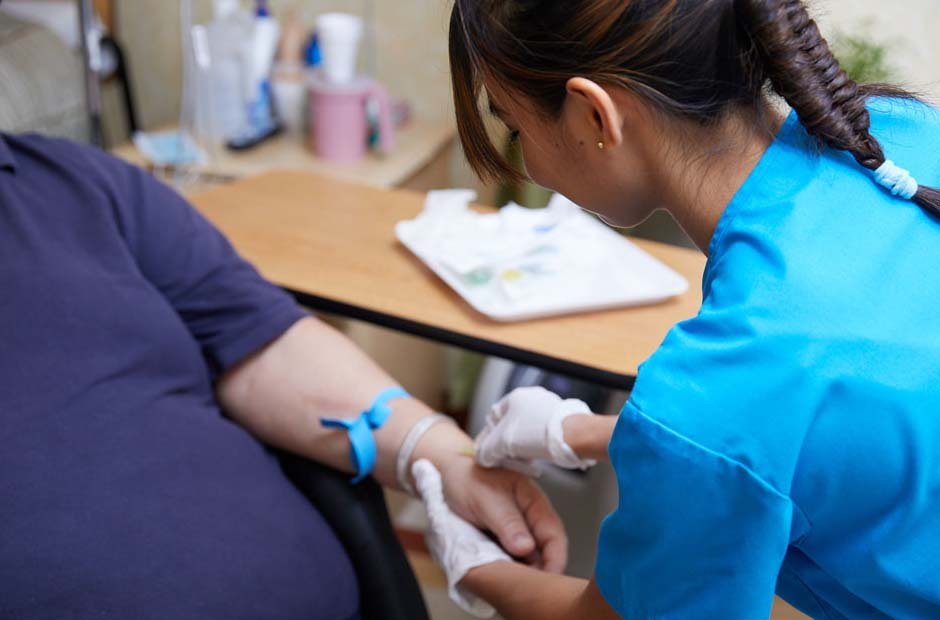In today’s fast-paced world of medicine, intravenous (IV) therapy has become a cornerstone of patient care. This life-saving procedure involves delivering fluids, medications, and nutrients directly into a patient’s bloodstream through a needle and catheter. But have you ever wondered how this groundbreaking medical technique was discovered and how it has evolved over time? Join us on a journey through history as we explore the fascinating origins of IV therapy and its everyday applications in modern medicine.
The Birth of Intravenous Therapy
The concept of intravenous therapy can be traced back to ancient times, with early attempts at blood transfusion and medicinal infusions. However, it wasn’t until the 17th century that the first documented successful IV therapy occurred. English physician Christopher Wren and Irish physician Robert Boyle conducted experiments in which they successfully injected substances into the veins of animals. This marked a significant milestone in the development of IV therapy, but it would take several more centuries for the technique to gain widespread acceptance.
The 19th Century Breakthroughs
The 19th century witnessed significant advancements in IV therapy. French physiologist Claude Bernard made important contributions to the understanding of the circulatory system, laying the groundwork for safer intravenous procedures. However, it was the work of Irish physician Sir Thomas Latta in 1831 that truly revolutionized IV therapy. Latta successfully administered saline solution to cholera patients through intravenous infusion, saving many lives in the process.
World War I and the Rise of IV Therapy
The outbreak of World War I provided a unique opportunity for the further development of IV therapy. Medical practitioners on the battlefield used intravenous fluids to treat wounded soldiers, showcasing the effectiveness of this technique in emergency situations. As a result, IV therapy gained broader acceptance and became an essential tool in medical practice.
Modernizing IV Therapy
The mid-20th century saw significant improvements in IV technology. The introduction of plastic catheters, better sterilization techniques, and the development of various IV solutions made the procedure safer and more accessible. Additionally, the advent of modern antibiotics and other medications meant that IV therapy could be used to deliver a wide range of treatments directly into the bloodstream.
Daily Applications of IV Therapy in Today’s World
In the 21st century, IV therapy has become an integral part of modern medicine, with a wide range of applications:
Emergency Medicine: IV therapy is essential for resuscitating patients in critical condition, delivering life-saving medications, and rapidly rehydrating individuals suffering from dehydration or shock.
Surgery: Surgeons use IV lines to administer anesthesia, control blood pressure, and deliver medications during surgical procedures.
Chronic Illness Management: Many patients with chronic illnesses, such as cancer or autoimmune disorders, rely on regular IV therapy to receive medications and nutrients necessary for their treatment.
Nutritional Support: IV therapy is used to provide essential nutrients and vitamins directly to the bloodstream for patients who have difficulty absorbing them through the digestive system.
Cosmetic and Wellness Treatments: IV therapy has gained popularity in recent years for its use in wellness clinics and spas, offering hydration, vitamins, and minerals for improved energy and well-being.
In recent years, a new trend has emerged in the world of healthcare – mobile IV therapy services. These services offer the convenience of receiving intravenous treatments in the comfort of your own home, hotel room, or even at special events. Let’s explore this innovative development in IV therapy and how it has made healthcare more accessible to people in today’s fast-paced world.
The Rise of Mobile IV Therapy
The concept of mobile IV therapy gained momentum as a response to the increasing demand for on-the-go healthcare solutions. Modern lifestyles often leave people with little time for traditional doctor’s appointments or trips to medical facilities. Mobile IV therapy services like IV Minnesota have stepped in to bridge this gap by offering a range of intravenous treatments delivered to your location of choice.
Safety and Regulation
While mobile IV therapy offers undeniable benefits, it’s essential to ensure that the service you choose meets safety and regulatory standards. Reputable providers employ licensed healthcare professionals who follow strict protocols for cleanliness, infection control, and patient assessment.
Conclusion
From its humble beginnings in the 17th century to its ubiquitous presence in modern medicine, IV therapy has come a long way. This remarkable medical procedure has saved countless lives and continues to play a pivotal role in healthcare today. As technology and medical knowledge advance, we can only expect IV therapy to become even safer, more effective, and more accessible in the years to come, further improving patient outcomes and quality of life.
















